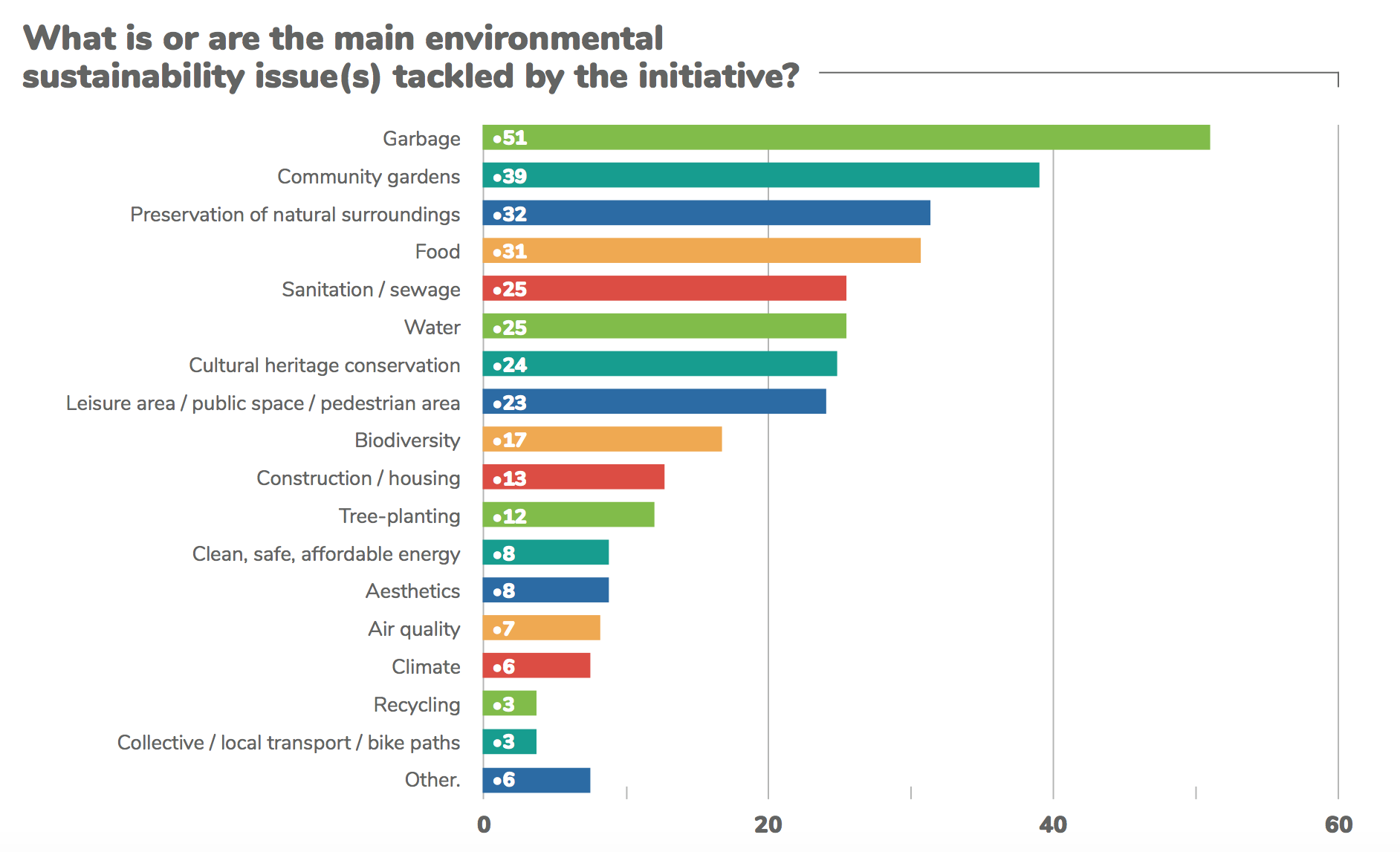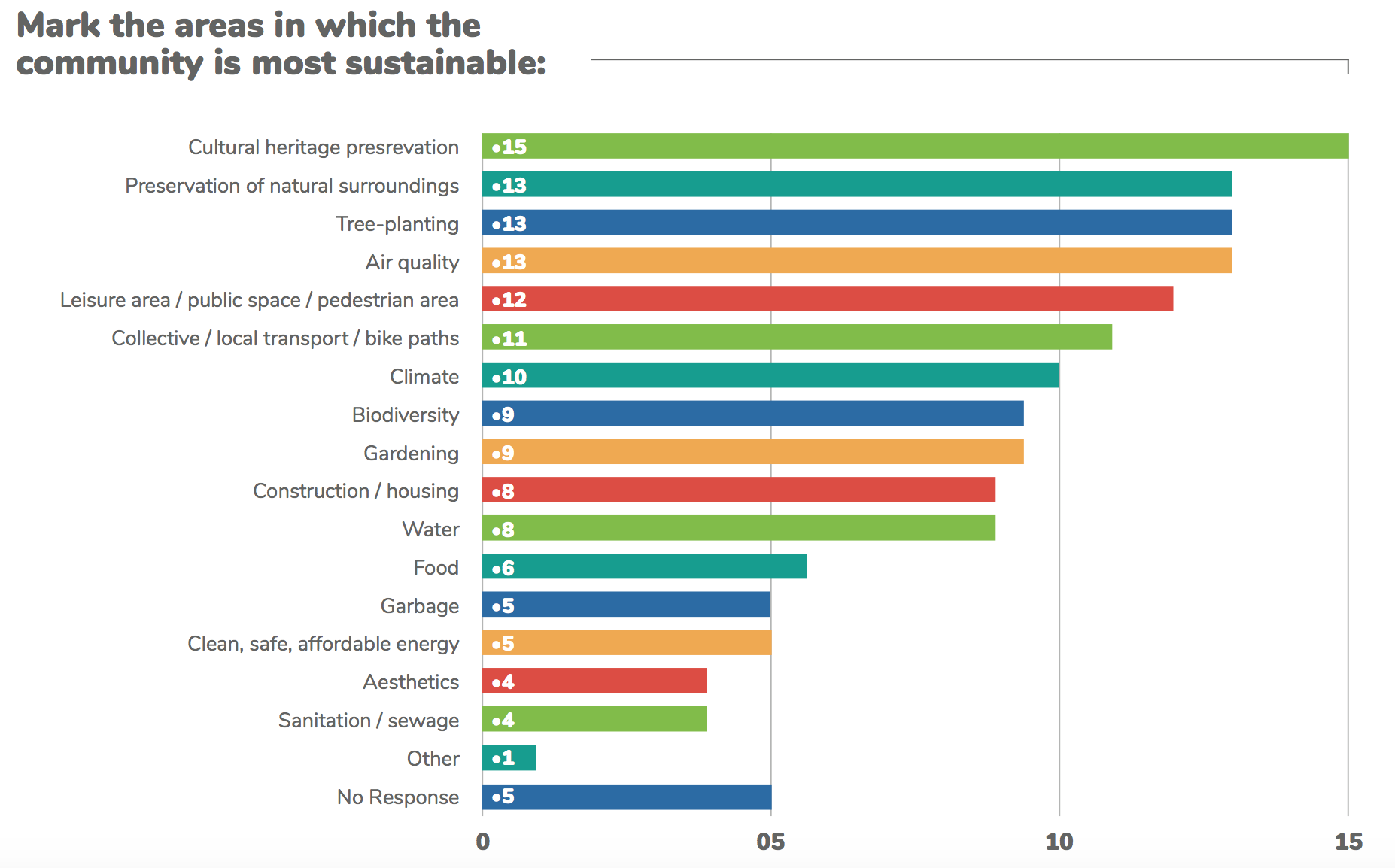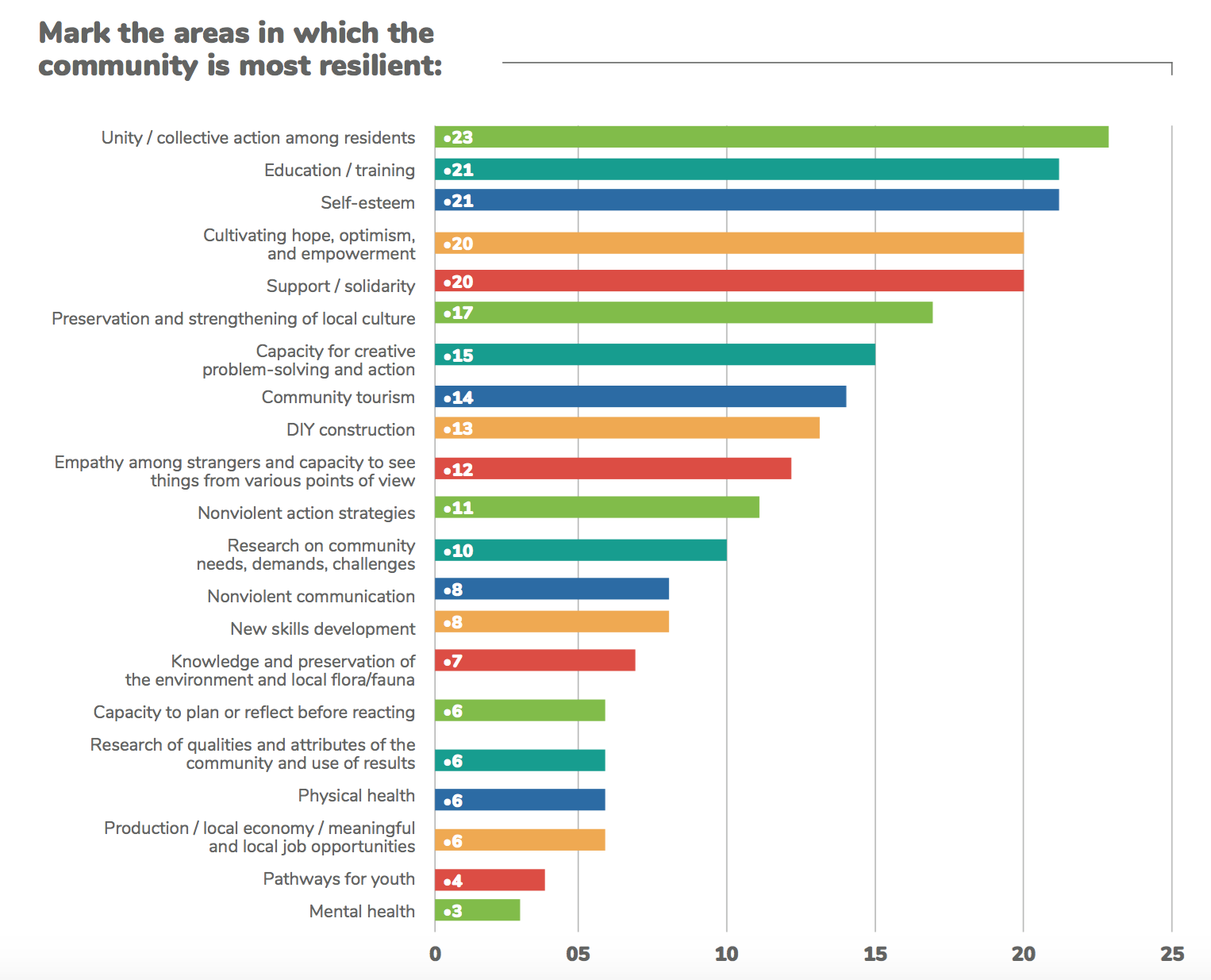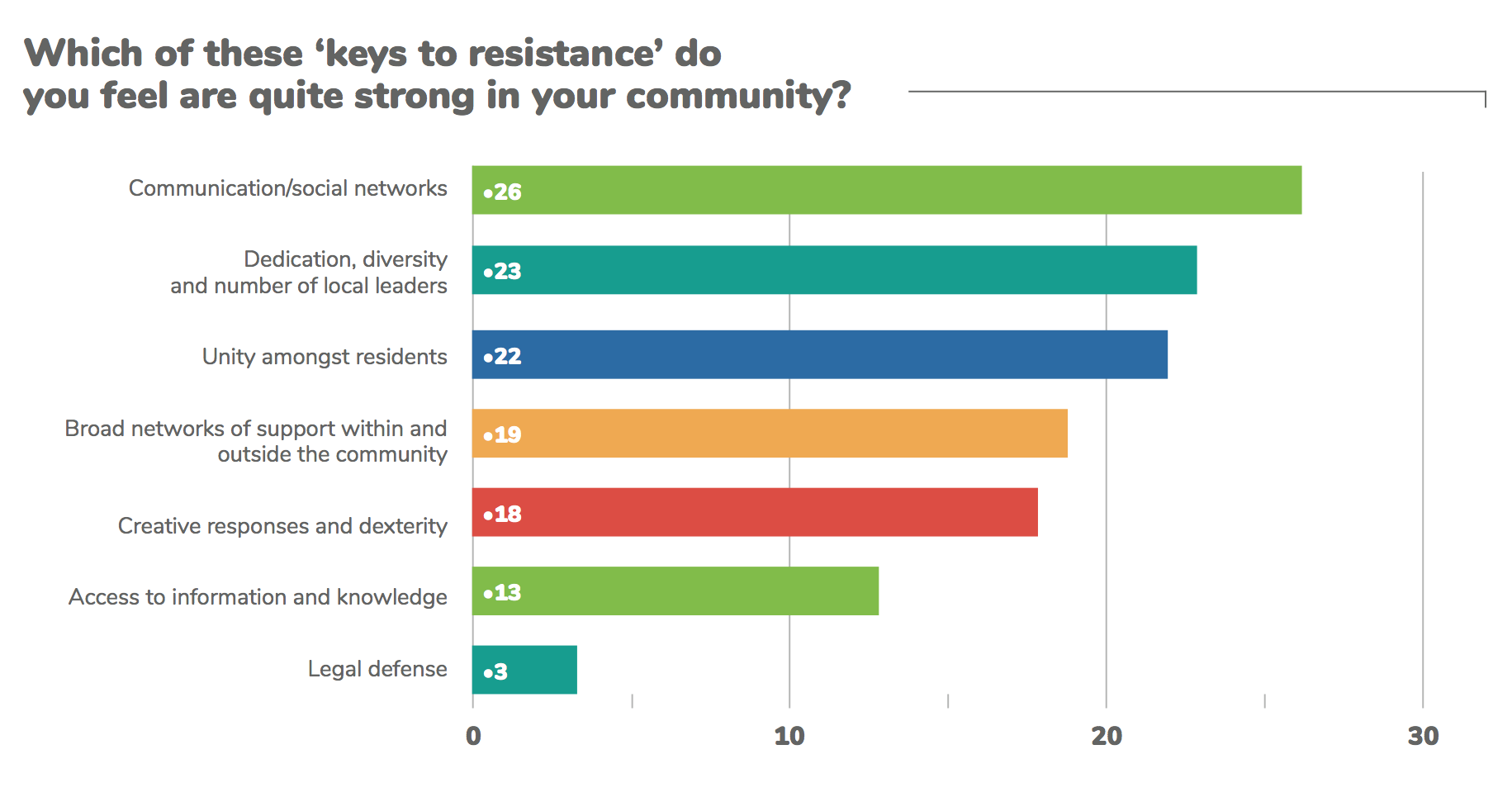Sustainable Favela Network Now Mapped
February 28, 2018—With support from the Heinrich Böll Foundation Brazil, between June and October 2017, Catalytic Communities mapped 111 initiatives and proposals in the Rio de Janeiro Metropolitan Region that strengthen social resilience and environmental sustainability in favela communities—building on the momentum generated by our award-winning film “Favela as a Sustainable Model,” produced in anticipation of the 2012 UN Rio+20 Conference. We are delighted to share three results of these efforts: the Sustainable Favela Network Members Contact List, the Sustainable Favela Network Map and the extensive English-language Final Report sharing methods, data analysis and reflections.
- Read the full Report and analysis in English. And Portuguese.
- Explore the Sustainable Favela Network map.
- Check out Profiles of Network members featured on RioOnWatch.
- Contact Network members to support and feature their work.
- Share this release with colleagues.
- Follow the Sustainable Favela Network on Facebook.
Introduction
The “Sustainable Favela Network: Map (2017)” report presents the background, motivations and objectives for creating the Sustainable Favela Network (SFN), and provides a comprehensive account of the methodology used in the construction of the SFN Map (plus results and analysis of the data collected).
 Given that the city of Rio de Janeiro contains 1,000 favelas, which collectively house 24% of the population, and that each organically-developed community represents a unique experience, CatComm understands favelas as simply neighborhoods that develop informally out of an unmet need for affordable housing. Favelas are not, therefore, intrinsically a problem. They are, at their core, a solution. Consequently, the 120-year history of public neglect of favelas, and their DIY development, has resulted in a range of impacts, including both major challenges and significant qualities.
Given that the city of Rio de Janeiro contains 1,000 favelas, which collectively house 24% of the population, and that each organically-developed community represents a unique experience, CatComm understands favelas as simply neighborhoods that develop informally out of an unmet need for affordable housing. Favelas are not, therefore, intrinsically a problem. They are, at their core, a solution. Consequently, the 120-year history of public neglect of favelas, and their DIY development, has resulted in a range of impacts, including both major challenges and significant qualities.
Over the years, CatComm has identified a large number of sustainable urban qualities in the city’s favelas—qualities that are nowadays promoted in large urban centers around the world: affordable housing in central areas; modest density–enough to facilitate access to public services but without excessive verticality, which breeds isolation; pedestrian-prioritized streetscapes; high use of bicycles and public transportation; ‘mixed-use’ residential and commercial establishments; housing located near employment; organic architecture; a culture of collective action; intricate solidarity networks; and a high degree of cultural production and entrepreneurship.
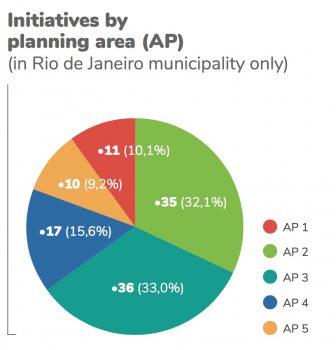 In addition, favelas are home to numerous community projects in which residents face a variety of challenges, including access to: waste management, sewerage, childcare, literacy, senior care, art, literature, sports, community organizing, soup kitchens, nutrition, hygiene, dance, and numerous others. These initiatives all serve to raise awareness among the residents who benefit from them, even while they are made necessary due to the lack of public investment.
In addition, favelas are home to numerous community projects in which residents face a variety of challenges, including access to: waste management, sewerage, childcare, literacy, senior care, art, literature, sports, community organizing, soup kitchens, nutrition, hygiene, dance, and numerous others. These initiatives all serve to raise awareness among the residents who benefit from them, even while they are made necessary due to the lack of public investment.
Therefore, we feel it is time to foster a network-based movement that values and unites the assets of favelas, constructing a path towards sustainable development that respects local knowledge.
To that end, we published numerous calls in our network. From July to November 2017, we received 158 sign-ups for the Sustainable Favela Network, of which 111 initiatives are now on the Sustainable Favela Network Map. Please take some time to click around and learn about some of the amazing grassroots projects and leaders featured.
We’ve already profiled a number of them on RioOnWatch. In addition to the map and the report, we have also made public a list of the members of the network so that participants and others who want to support these initiatives can easily find them. Please encourage your journalist, academic, and nonprofit friends to seek out members of this network for reporting projects, information exchange and support.
Objectives of the Sustainable Favela Network
The Sustainable Favela Network aims to:
- Recognize initiatives and characteristics that already exist in Rio’s favelas which represent socioenvironmental sustainability and resilience;
- Provide visibility for these initiatives and make their models accessible;
- Create networks for the exchange of knowledge, information, and strategies among different sustainability initiatives;
- Provide training and develop partnerships that strengthen the Network, engendering a sustainable community-
controlled model of development; and - Extend this conversation beyond Rio.
Key Data from the Mapped Initiatives
The chart below shows the number of initiatives active in each area of environmental sustainability and provides a sense of local priorities:
The chart below shows the number of initiatives working in each area of resilience and provides a sense of the most common themes across their local activities:
Key Data from the Mapped Communities
We also gave registering participants the opportunity to describe their communities. We received data from 55 communities:
We asked which of the following ‘keys to resistance’ (based on the methodology developed by CatComm after studying successful cases of resistance to removals in pre-Olympic Rio) leaders considered to be strong in the 55 communities. The three strongest were communication, dedication of leaders, and unity among residents. What was said to be lacking most is legal defense and access to information:
An Insurgent Movement
“From the survey and mapping processes described in this report, one fact is obvious: there is a clear interest and dedication on the part of favela residents to tackle socioenvionmental challenges. Furthermore, the responses we received clearly underscored the inherent connection between the social and the environmental. Over the course of the research we saw that although initiatives could be registered in the areas of ‘environmental sustainability’ or ‘social resilience,’ practically all leaders registered their projects in both camps, perceiving the immediate and direct link between the two topics. For the members of the Sustainable Favela Network, the environment in which they live and social resilience constitute integral parts of the ecosystem of life in the favela.”
Next Steps
The Sustainable Favela Network project proposed seven main initiatives:
- Mapping (presented in this 2017 report and updated annually)
- Profiles and documentation of the initiatives on RioOnWatch (2017-)
- Exchanges (intensive and holistic) within the Sustainable Favela Network (2018)
- Development of a ‘sustainable favela indicator’ (SFI) (2018-2019)
- Strategic training to strengthen the Network and its members (2018-)
- Promotion of collective projects among Network members (2019-)
- Advocacy on behalf of the movement for sustainability and resilience in Rio favelas and globally (2019-)
Having completed the mapping phase and network analysis in this report, and with the profile articles already underway, in 2018 we are moving onto the third initiative: Exchanges within the Sustainable Favela Network. In September and October we will realize exchanges, training and networking events among all of the projects along with the Network’s launch event. Whereas last year the goal of the Sustainable Favela Network was to map and analyze the initiatives, this year’s goal is to network and recognize them as a movement. Next year we’ll focus on strengthening this movement through trainings and joint proposals.

